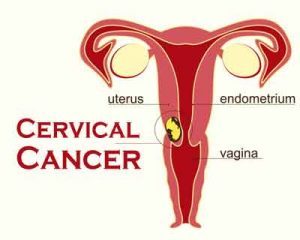- Home
- Editorial
- News
- Practice Guidelines
- Anesthesiology Guidelines
- Cancer Guidelines
- Cardiac Sciences Guidelines
- Critical Care Guidelines
- Dentistry Guidelines
- Dermatology Guidelines
- Diabetes and Endo Guidelines
- Diagnostics Guidelines
- ENT Guidelines
- Featured Practice Guidelines
- Gastroenterology Guidelines
- Geriatrics Guidelines
- Medicine Guidelines
- Nephrology Guidelines
- Neurosciences Guidelines
- Obs and Gynae Guidelines
- Ophthalmology Guidelines
- Orthopaedics Guidelines
- Paediatrics Guidelines
- Psychiatry Guidelines
- Pulmonology Guidelines
- Radiology Guidelines
- Surgery Guidelines
- Urology Guidelines
Annual Pap Test ‘Thing of the Past' : New USPSTF recommendation

The United States Preventive Services Task Force (USPSTF) has released new recommendations on screening for cervical cancer which for the first time do not include the Pap test. Since its introduction 75 years ago, exfoliative cytology commonly known as the Pap test has been the “gold standard” screening test for cervical cancer but the latest recommendations have made the “annual Pap” a historical artefact. The update by an independent panel of experts in primary care and prevention on 2012 recommendations for cervical cancer screening has appeared in the Journal of the American Medical Association (JAMA).
Most of the cervical cancer cases are caused by infection with oncogenic, or high-risk, types of HPV. It is the fourth most common cancer in women worldwide. From 2012 to 2016, there was a continued decline in the number of women receiving cervical cancer screening and only 43 per cent of adolescents (50 percent of girls and 38 percent of boys) were up to date with the HPV vaccination guidelines even 10 years after approval of the first HPV prophylactic vaccine in the U.S.
The new USPSTF guidelines recommend that women ages 21 to 29 years be screened for cervical cancer every three years with the Pap test alone which remains unchanged from 2012. USPSTF recommends screening for cervical cancer with primary high-risk human papillomavirus (hrHPV) test alone every five years for women ages 30 to 65 years. As an option, they also recommend the previous guideline of hrHPV test and Pap test together (co-testing) every three years. Pap tests detect changes in cervical cells that could indicate the presence of pre-cancer or cancer, while HPV tests detect the genetic material or DNA of the high-risk types in cervical samples.
The 2018 recommendations go one step further by including, for the first time, the option of hrHPV testing alone, without a Pap test, every five years."The current guidelines preserve the greatest range of choices for practitioners and patients; in the sense that both will benefit,” said Learman. “More efficient cervical cancer screening every three to five years will liberate time at the annual visit to discuss prevention of other cancers and chronic diseases that disproportionately burden women.”
Because most high-risk HPV infections among healthy individuals are cleared spontaneously without intervention, over the years, screening and clinical management recommendations have become more conservative in general and for young women in particular.
“Despite many advances such as the HPV prophylactic vaccine, for now, high-quality screening remains an essential tool in the prevention of cervical cancer,” said Learman. “With the new recommendations come new demands on patients, especially those who bear the greatest disease burden from cervical cancer: women from low socioeconomic backgrounds, women from communities of color, and other women with compromised access to timely and effective care.”
Nearly all cases of cervical cancer are caused by infection with oncogenic, or high-risk, types of HPV. Cervical cancer is the fourth most common cancer in women worldwide. In 2012, 10 percent of women in the United States ages 21 to 65 years (an estimated 8 million women) reported not being screened for cervical cancer in the past five years. From 2012 to 2016, there was a continued decline in the number of women receiving cervical cancer screening. In addition, 10 years after approval of the first HPV prophylactic vaccine in the U.S., only 43 percent of adolescents (50 percent of girls and 38 percent of boys) were up to date with the HPV vaccination guidelines, compared with 88 percent for tetanus, diphtheria, and acellular pertussis vaccine.

Disclaimer: This site is primarily intended for healthcare professionals. Any content/information on this website does not replace the advice of medical and/or health professionals and should not be construed as medical/diagnostic advice/endorsement or prescription. Use of this site is subject to our terms of use, privacy policy, advertisement policy. © 2020 Minerva Medical Treatment Pvt Ltd